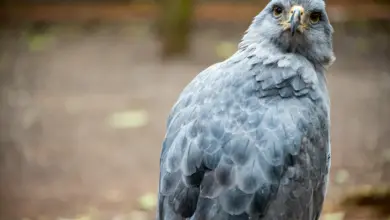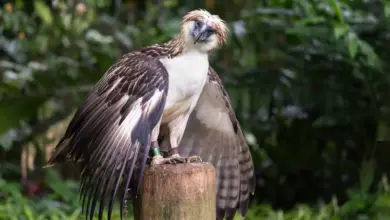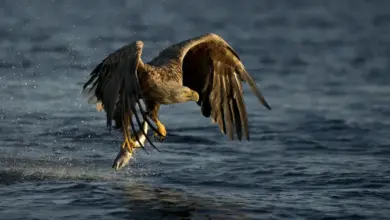The Ornate Hawk-eagles, Spizaetus ornatus, is a bird of prey from the tropical Americas. Like all eagles, it is in the family Accipitridae.
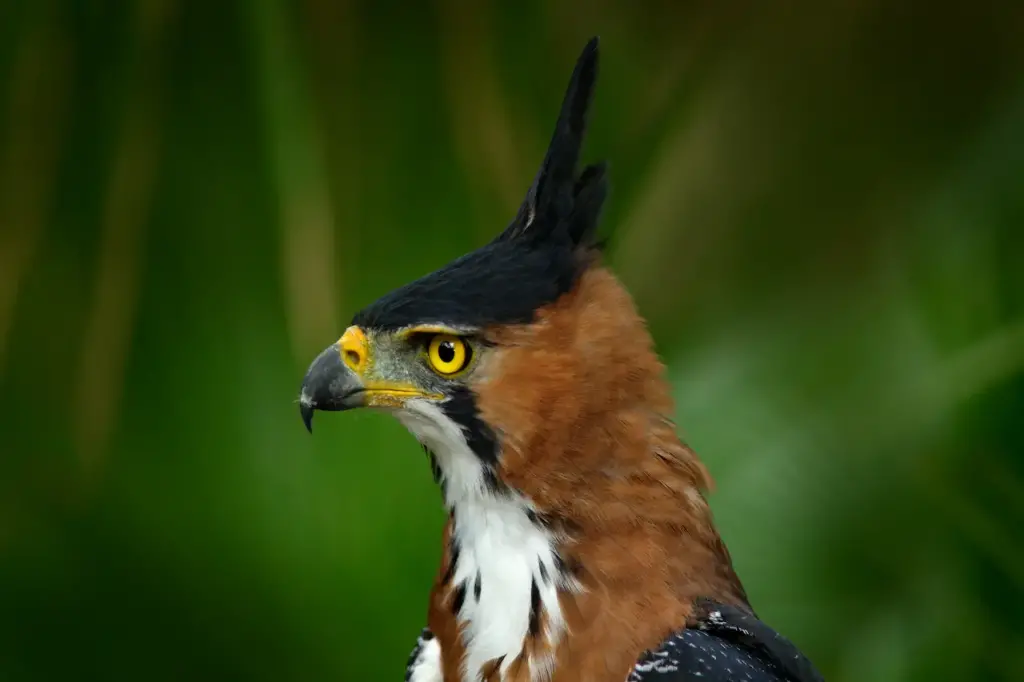
Distribution / Range
This bird is found in humid tropical forests from southern Mexico and the Yucatán Peninsula, to Trinidad and Tobago, south to Peru and Argentina.
They are able to tolerate some degree of habitat fragmentation, breeding successfully near cities and in forest fragments as small as 200 hectares (490 acres).
Description
This species is notable for its vivid colors, which differ markedly between adult and immature birds.
This is a medium-large raptor, at about 58-64 cm (23-25 in) in length, and weighing about 1200 g (42 oz). It has a prominent pointed crest, raised when excited, a black bill, broad wings and a long rounded tail.
The typical adult has blackish upperparts and crown, bright chestnut sides to the neck and breast and a black-edged white throat and central breast. The rest of the underparts and feathered legs are white barred with black, and the tail has broad black bars. The underwings are white, with barred flight feathers; due to the heavy pattern birds usually look rather dark in flight.
Males and females look alike, but young birds have a white head and underparts, with a grey crest, brown upperparts, and barring only on the flanks and legs.
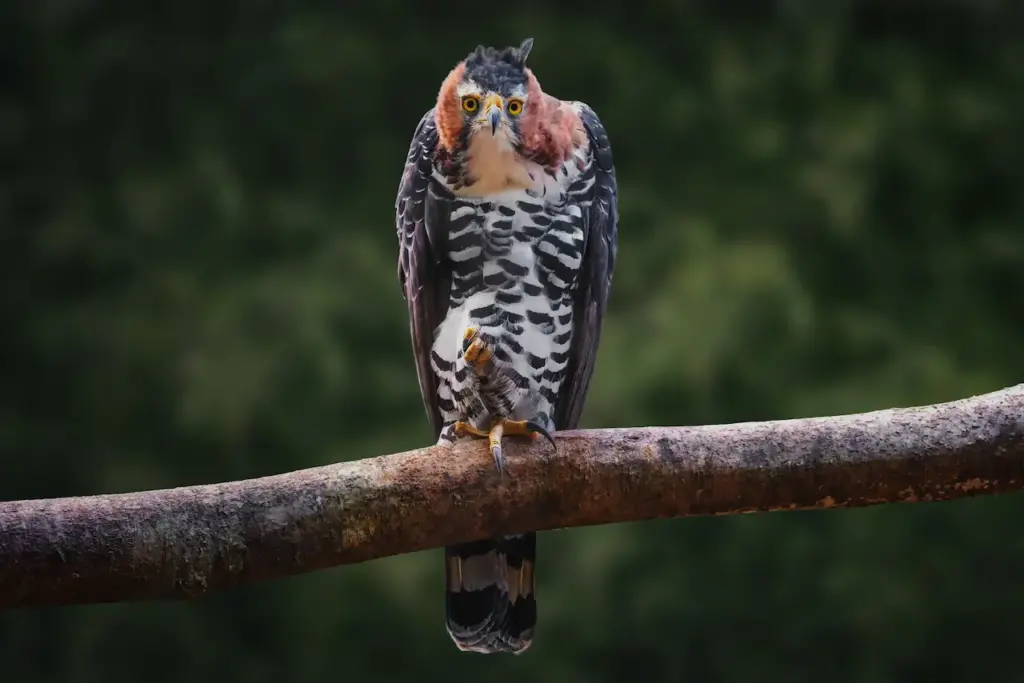
Diet / Feeding
Ornate Hawk-eagles eat mainly birds, with some small mammals, and reptiles.
Breeding / Nesting
The male’s courtship display is a dive with folded wings, and a climb, sometimes completing a loop. The pair will touch talons in flight as the female rolls on her back.
This species builds a large stick nest in a high tree (e.g. Ceiba), many meters above ground. The nest is around 1 meter (3 ft) in diameter.
Most breeding activity occurs around April/May, differing slightly according to location: in Guatemala breeding activity was observed from March to June, in Costa Rica in April and May, in Panama from November/December to May, and in the lowlands of Ecuador in March and April.
Calls / Vocalizations
The Ornate Hawk-eagles call is a high-pitched whee-oo whee-oo.
Status
Though locally rare, it is not considered a threatened species by the IUCN due to its wide range.
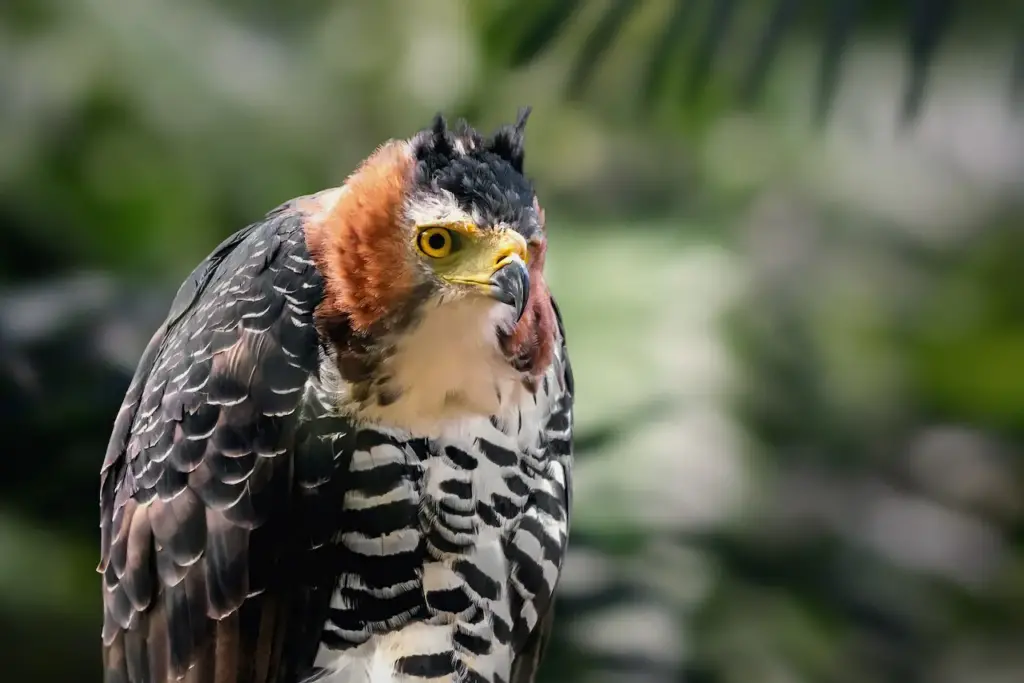
References
- BirdLife International (BLI) (2004). Spizaetus ornatus. 2006. IUCN Red List of Threatened Species. IUCN 2006. Retrieved on 12 May 2006. Database entry includes justification for why this species is of least concern
- ffrench, Richard; O’Neill, John Patton and Eckelberry, Don R. (1991): A guide to the birds of Trinidad and Tobago (2nd edition). Comstock Publishing, Ithaca, N.Y.. ISBN 0-8014-9792-2
- Greeney, Harold F.; Gelis, Rudolphe A. and White, Richard (2004): Notes on breeding birds from an Ecuadorian lowland forest. Bull. B.O.C. 124(1): 28-37.
- Hilty, Steven L. (2003): Birds of Venezuela. Christopher Helm, London. ISBN 0-7136-6418-5
- Zorzin, Giancarlo; Carvalho, Carlos Eduardo Alencar; de Carvalho Filho, Eduardo Pio Mendes and Canuto, Marcus (2006): Novos registros de Falconiformes raros e ameaçados para o estado de Minas Gerais [New records of rare and threatened Falconiformes for the state of Minas Gerais]. Revista Brasileira de Ornitologia 14(4): 417-421 [Portuguese with English abstract].
Copyright: Wikipedia. This article is licensed under the GNU Free Documentation License. It uses material from Wikipedia.org … Additional information and photos added by Avianweb.
Please Note: The articles or images on this page are the sole property of the authors or photographers. Please contact them directly with respect to any copyright or licensing questions. Thank you.

